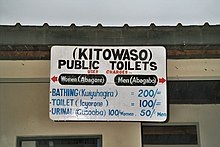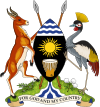
The Bantu languages are a language family of about 600 languages that are spoken by the Bantu peoples of Central, Southern, Eastern and Southeast Africa. They form the largest branch of the Southern Bantoid languages.

Swahili, also known by its local name Kiswahili, is a Bantu language originally spoken by the Swahili people, who are found primarily in Tanzania, Kenya, and Mozambique. Estimates of the number of Swahili speakers, including both native and second-language speakers, vary widely. They generally range from 60 million to 150 million; with most of its native speakers residing in Tanzania.
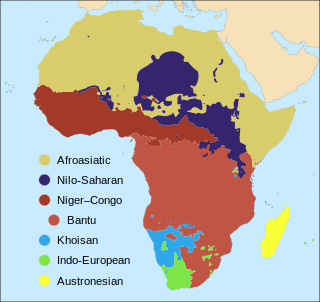
The number of languages natively spoken in Africa is variously estimated at between 1,250 and 2,100, and by some counts at over 3,000. Nigeria alone has over 500 languages, one of the greatest concentrations of linguistic diversity in the world. The languages of Africa belong to many distinct language families, among which the largest are:
Soga, or Lusoga, is a Bantu language spoken by the Soga people of the Busoga region in Eastern Uganda. With over three million speakers, it is one of the major languages of Uganda, after English, Swahili, and Luganda. However, it is largely restricted to the Busoga region, which is mainly within the natural boundaries of Lake Victoria to the south, Lake Kyoga to the north, the Nile river to the west and the Mpologoma ('Lion') river to the east of Namutumba district. It is tonal.
The Gusii language is a Bantu language spoken in Kisii and Nyamira counties in Nyanza Kenya, whose headquarters is Kisii Town,. It is spoken natively by 2.2 million people, mostly among the Abagusii. Ekegusii has only two dialects: The Rogoro (upper-side) and Maate (lower-side) dialects. Phonologically, they differ in the articulation of /t/. Most of the variations existing between the two dialects are lexical. The two dialects can refer to the same object or thing using different terms. An example of this is the word for cat. While one dialect calls a cat ekemoni, the other calls it ekebusi . Another illustrating example can be found in the word for sandals. While the Rogoro word for sandals is chisiripasi , the Maate dialect word is chitaratara . Many more lexical differences manifest in the language. The Maate dialect is spoken in Tabaka and Bogirango. Most of the other regions use the Rogoro dialect, which is also the standard dialect of Ekegusii.
Nyoro or Runyoro is a Bantu language spoken by the Nyoro people of Uganda. It has two dialects: Runyoro proper and Rutagwenda. A standardized orthography was established in 1947. It's most closely related to Rutooro.
Kenya is a multilingual country. The two official languages of Kenya, Swahili and English, are widely spoken as lingua francas; however, including second-language speakers, Swahili is more widely spoken than English. Swahili is a Bantu language native to East Africa and English is inherited from British colonial rule.
Nkore is a Bantu language spoken by the Nkore ("Banyankore") of south-western Uganda in the former province of Ankole, as well as in Tanzania, the DR Congo, Rwanda and Burundi.
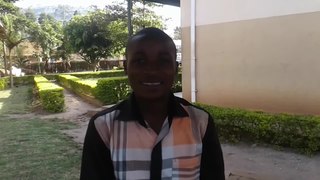
Kiga is a Great Lakes Bantu language of the Kiga people (Bakiga). Kiga is a similar and partially mutually intelligible with the Nkore language. It was first written in the second half of the 19th century. Kiga is largely spoken in the ancient Kigezi region which includes about 5 districts, namely Rubanda, Rukiga, Kabale, Kanungu and some parts of Rukungiri. As of 2021, Kiga is spoken natively by about 1.3 million people in Uganda.
Gweno is a Bantu language spoken in the North Pare Mountains in the Kilimanjaro Region of Tanzania. The people known as the Gweno are a Chaga ethnic and linguistic group. Since the Chaga people are Bantu speakers, the adopted language contains dialects similar to that of the Kenyan language Kamba. Gweno shares about 54% to 56% of its vocabulary with other Chaga dialects and 46% with Taita dialects. However, a large percentage of its vocabulary is not seen in the other dialects. Also at the start of the 11th century, the Chaga people descended and migrated from the Bantu group in which they migrated to the foothills of mount Kilimanjaro. The Gweno language is today spoken mostly by older adults, with younger generations having shifted to Asu and Swahili. Ethnologue considers Gweno to be moribund; the language is not being passed down because children have not been exposed to Gweno since the 1970s. The generational shift from Gweno to either Asu or Swahili has certainly created shifts in dialect, however Gweno speakers do not see this as a threat.
Digo (Chidigo) is a Bantu language spoken primarily along the East African coast between Mombasa and Tanga by the Digo people of Kenya and Tanzania. The ethnic Digo population has been estimated at around 360,000, the majority of whom are presumably speakers of the language. All adult speakers of Digo are bilingual in Swahili, East Africa's lingua franca. The two languages are closely related, and Digo also has much vocabulary borrowed from neighbouring Swahili dialects.
Ma'di is a Central Sudanic language spoken in Uganda and South Sudan. It is one of the Moru–Madi languages. The Madi people refer to their language as Ma'di ti, literally "Ma'di mouth".
Nkore-Kiga is a language spoken by around 5,800,000 people living in the extreme southwest of Uganda. It is often defined as two separate languages: Nkore and Kiga. It is closely related to Runyoro-Rutooro.
The Karamojong language is a Nilotic language spoken by the Karamojong people in Northeast Uganda.
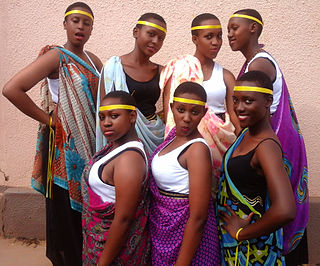
The Nkole people, also known as the Banyankole, are a Bantu ethnic group native to the Ankole region of Uganda. They are primarily found in the southwestern part of the country, in what was historically known as the Ankole Kingdom. The Banyankole are known for their rich cultural heritage and traditional cattle-keeping practices. They are closely related to other Bantu peoples of the region, namely the Nyoro, Kiga, Toro and Hema people.
Ik is one of the Kuliak languages of northeastern Uganda. The Kuliak languages form their own branch of the proposed Nilo-Saharan language family. With the other two Kuliak languages being moribund, Ik may soon be the sole remaining language of its family.
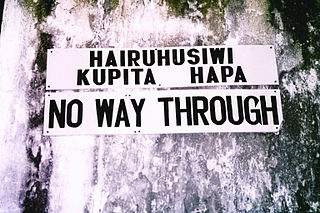
Tanzania is a multilingual country. There are many languages spoken in the country, none of which is spoken natively by a majority or a large plurality of the population. Swahili and English, the latter being inherited from colonial rule, are widely spoken as lingua francas. They serve as working languages in the country, with Swahili being the official national language. There are more speakers of Swahili than English in Tanzania.

The Bantu peoples are an indigenous ethnolinguistic grouping of approximately 400 distinct native African ethnic groups who speak Bantu languages. The languages are native to countries spread over a vast area from West Africa, to Central Africa, Southeast Africa and into Southern Africa. Bantu people also inhabit southern areas of Northeast African states.
The Rutara or Runyakitara languages are a group of closely related Bantu languages spoken in the African Great Lakes region. They include languages such as Runyoro, Runyankore and Ruhaya. The language group takes its name from the Empire of Kitara.
Nyoro-Tooro is a language spoken by around 1,200,000 people living in western Uganda. It is often defined as two separate languages: Nyoro and Tooro, though it is defined as one language by the Ministry of Education in Uganda. It is closely related to Runyankore-Rukiga.



